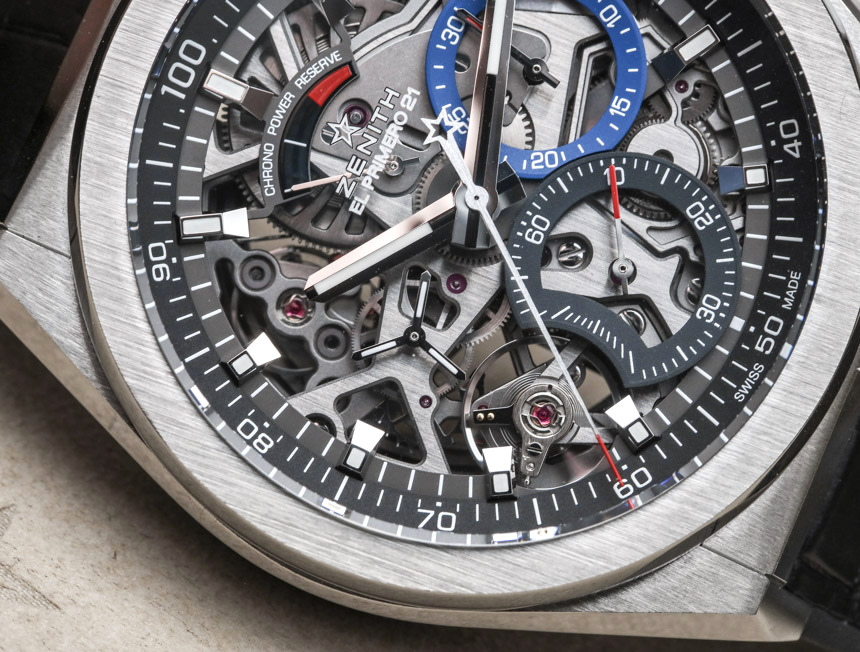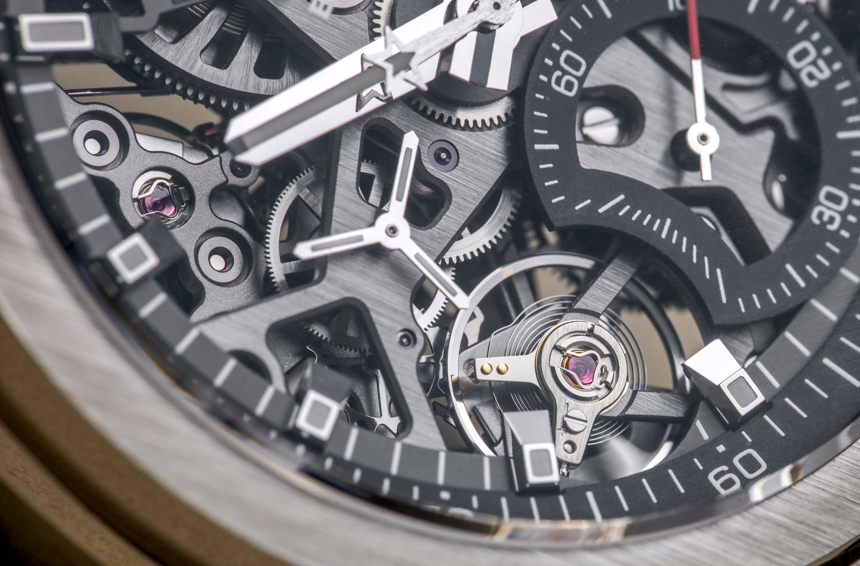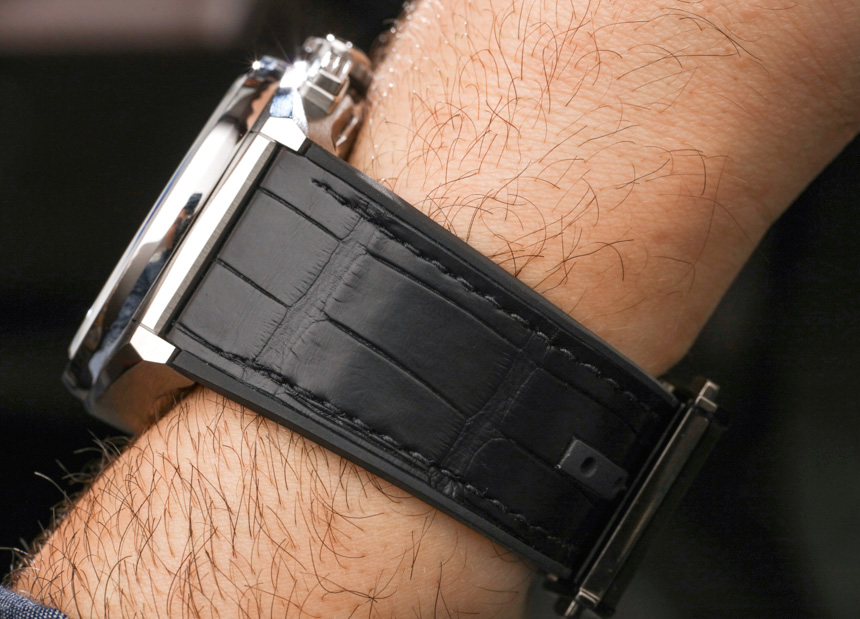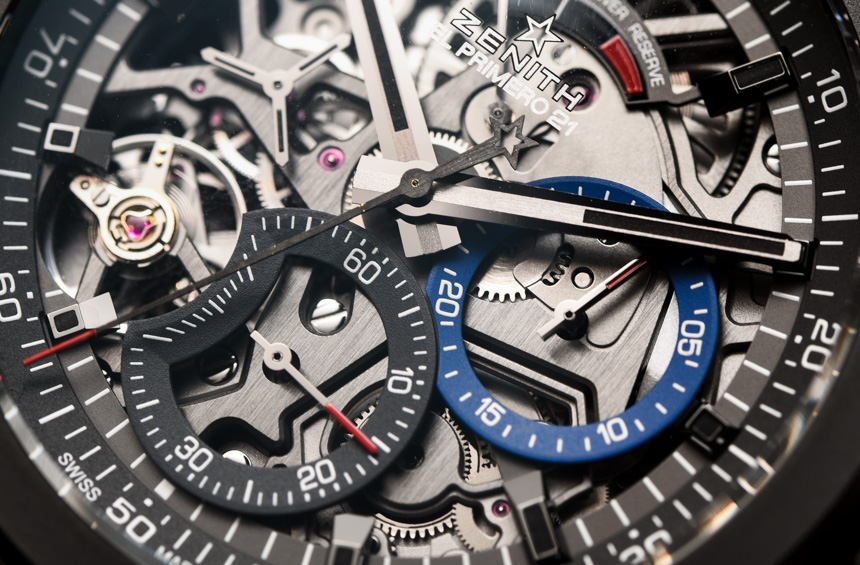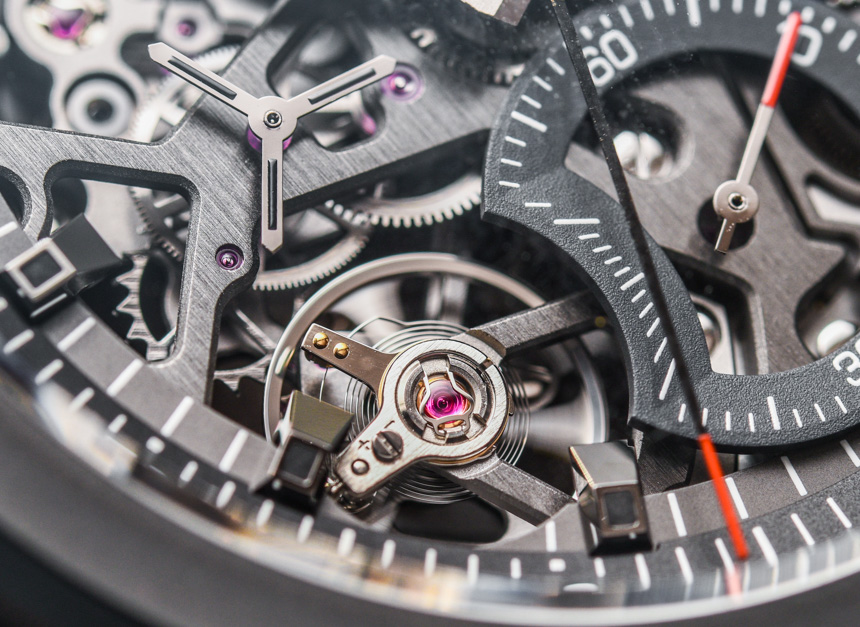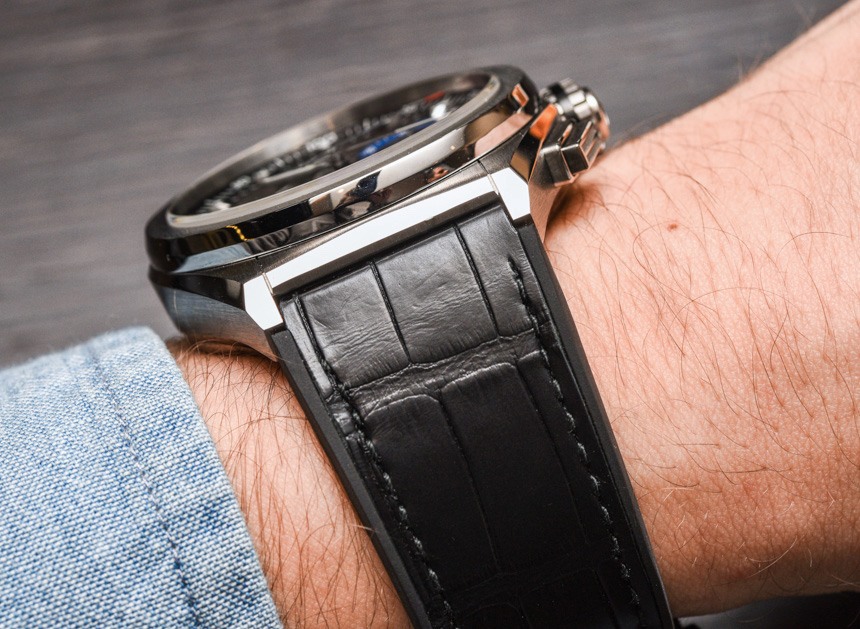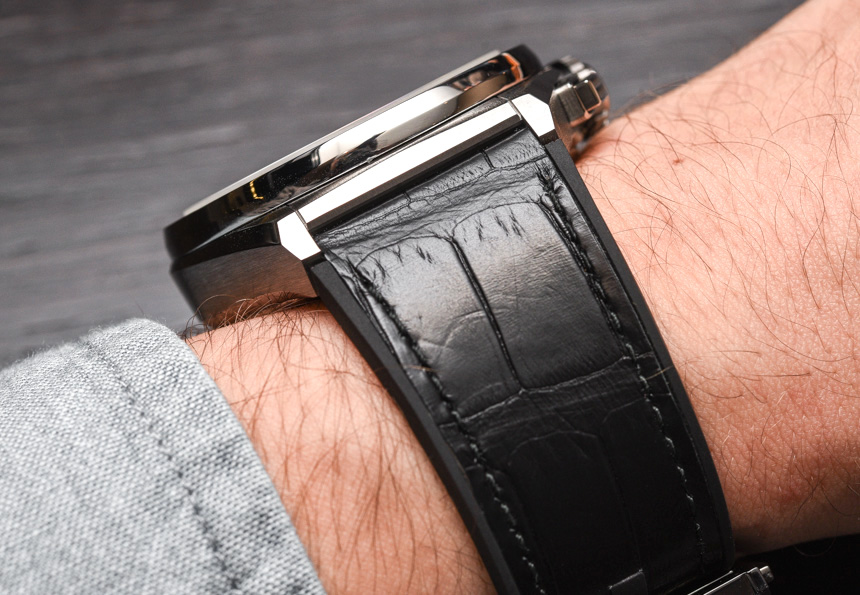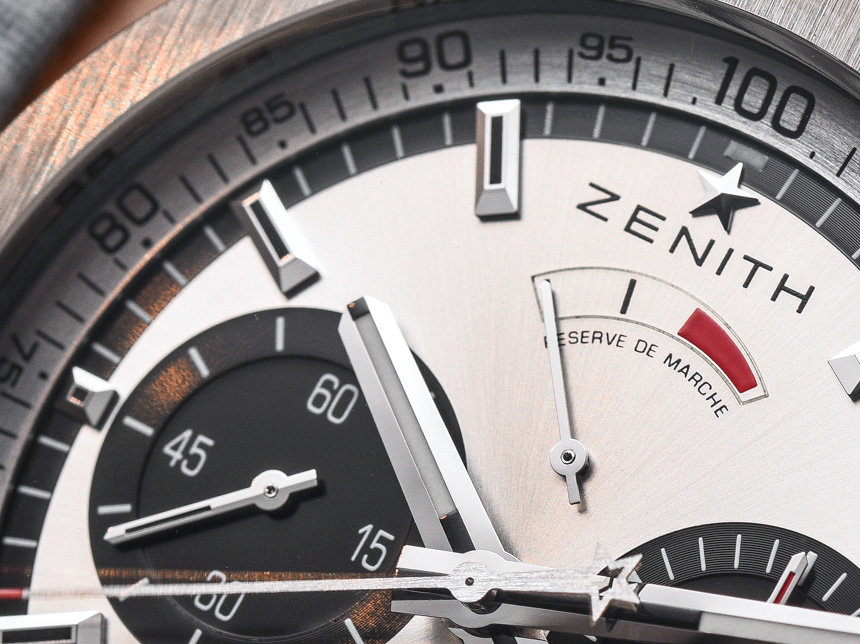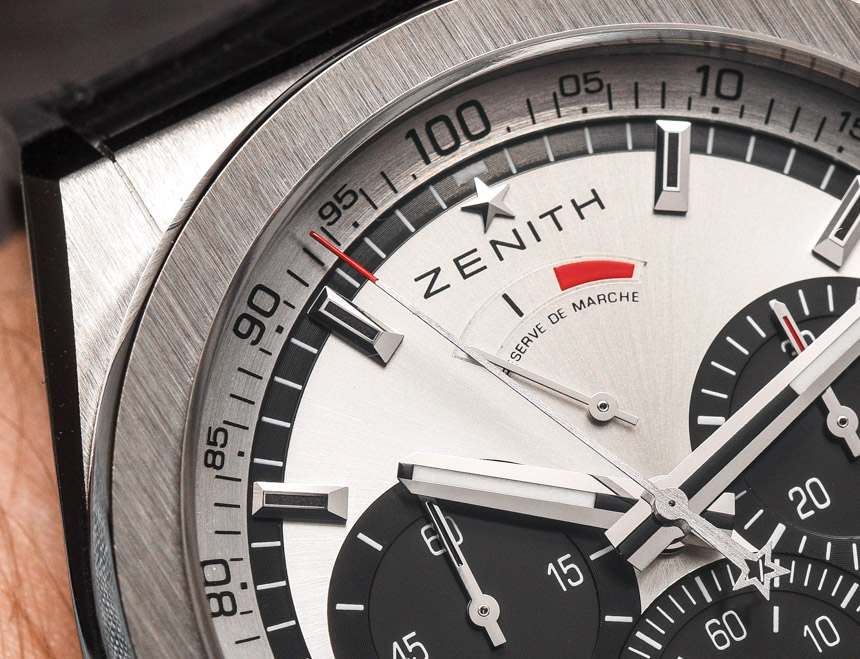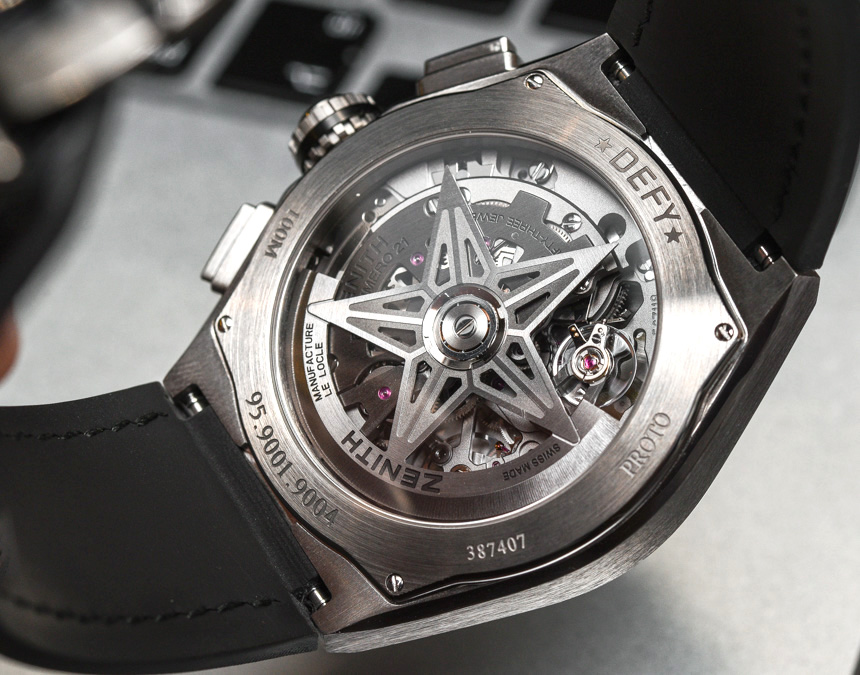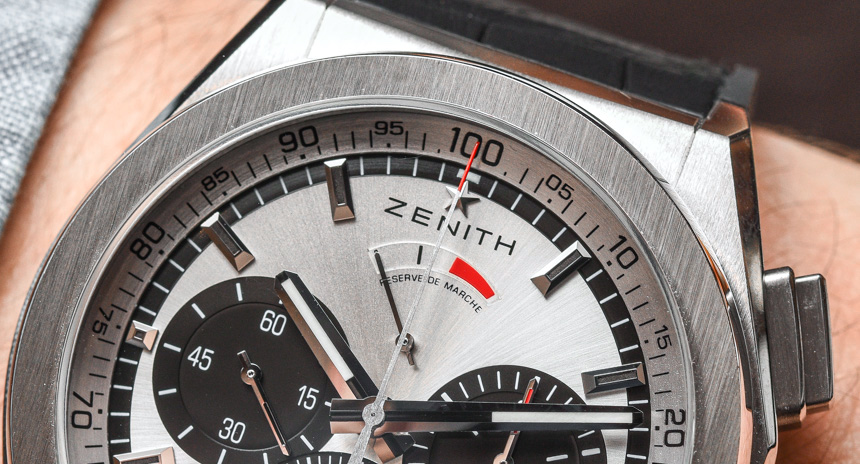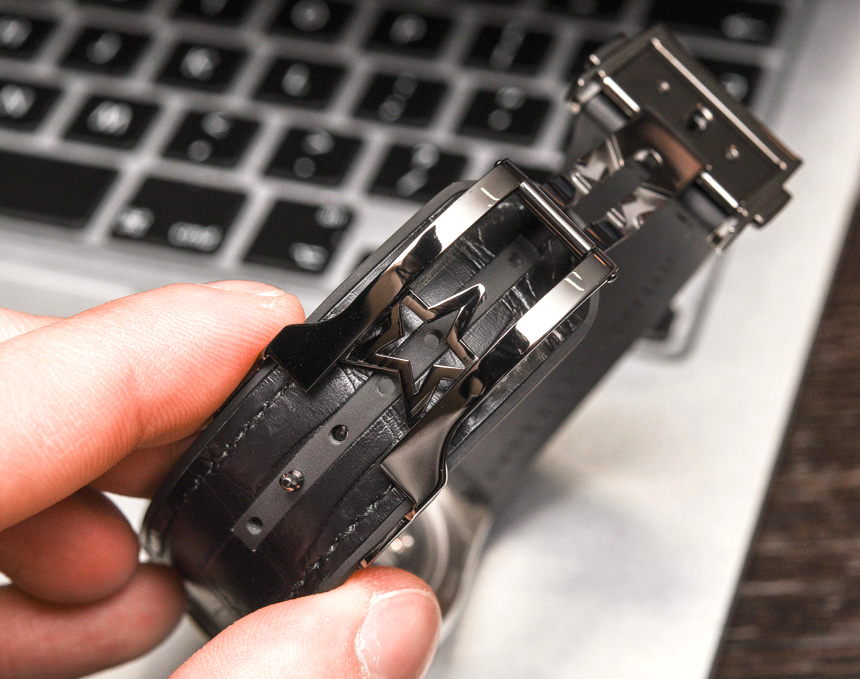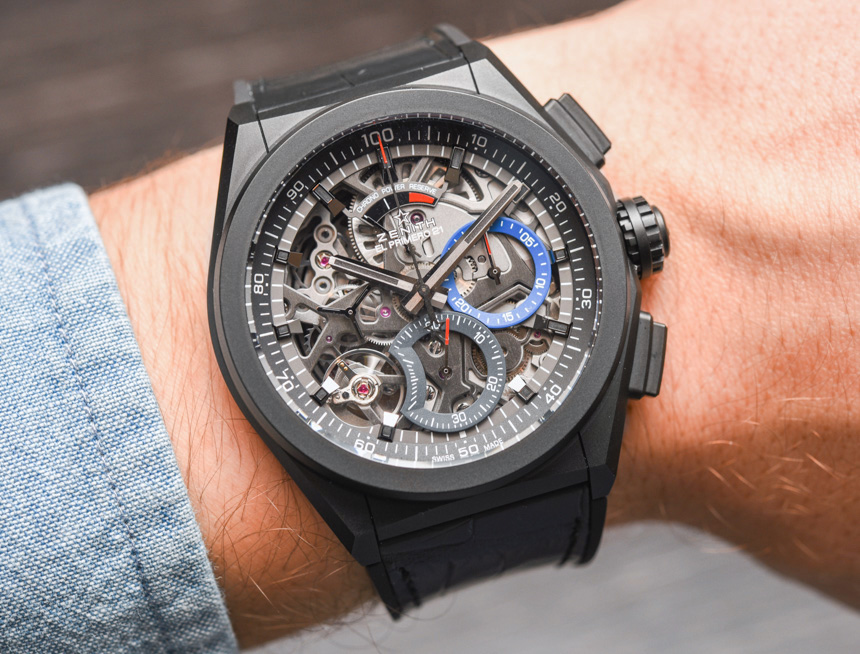
For me, one of the most anticipated watches of the Baselworld 2017 show to put on my wrist was the new Zenith Defy El Primero 21. Zenith let us know about the watch in advance of its release, and I was quite excited to see and play with it. I even had an opportunity to speak with Mr. Guy Semon at sister brand TAG Heuer, who was responsible for the sexy-looking El Primero 21 movement (the Zenith caliber El Primero 9004).
What surprised me when I spoke to Mr. Semon was that everything in the El Primero 21 movement was new. This was important to know because I was under the impression the movement was a re-done version of that which existed in the previous TAG Heuer Carrera Mikrograph. If you recall that model, you’ll know that it introduced the 1/100th-of-a-second mechanical chronograph into the LVMH watch group family and had a dial with an identical layout to that of the El Primero 21. Guy agreed that the El Primero 21 built on lessons learned with the Carrera Mikrograph, but said that it was an entirely new mechanism without any shared parts.
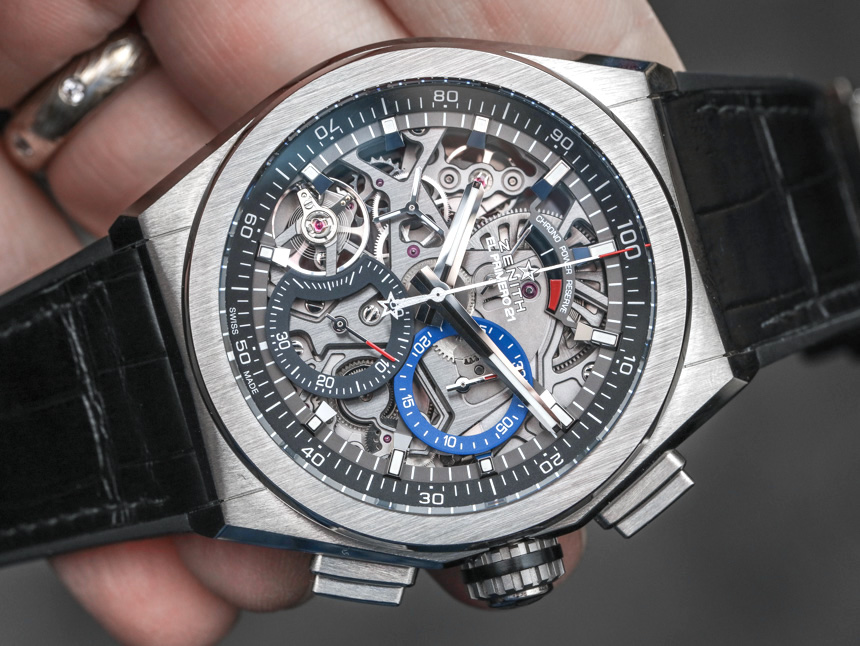
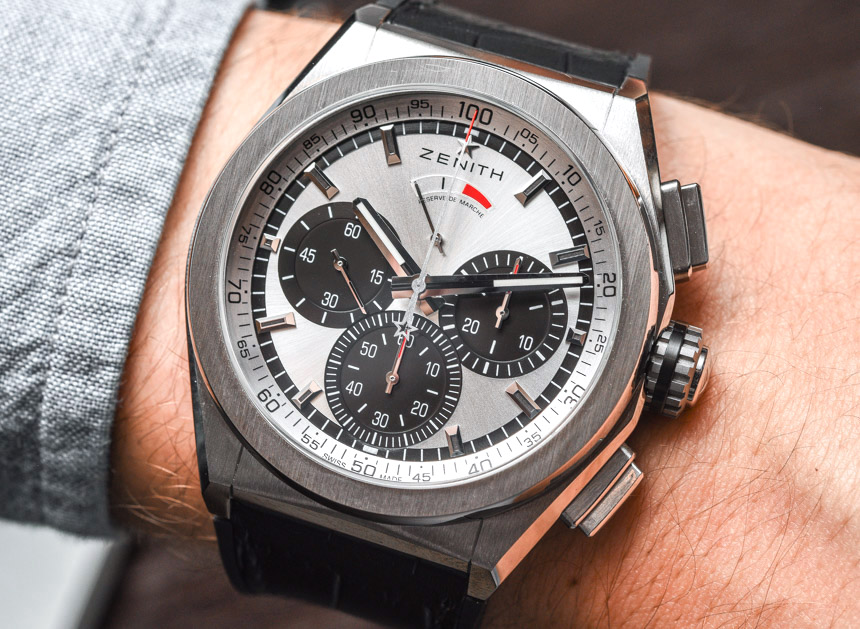
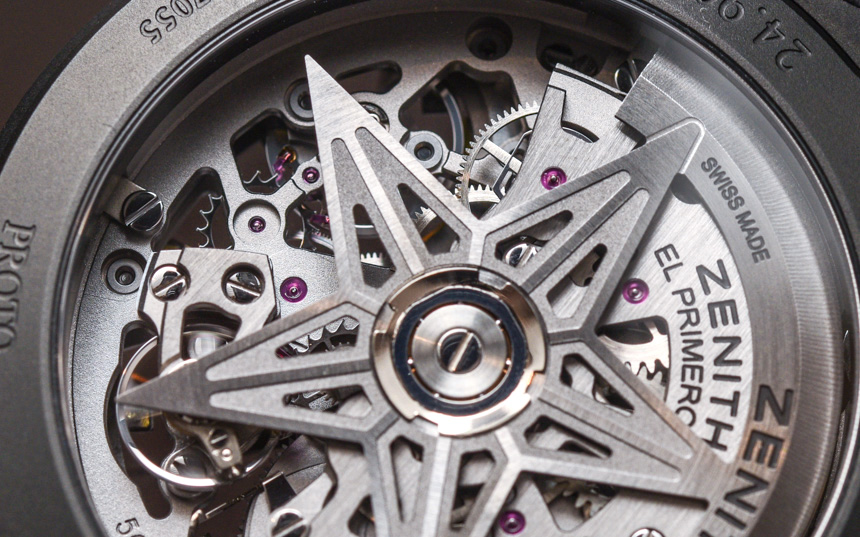
Of course, one thing that was new aside from movement architecture in the El Primero 21 was the special carbon material (ahem, Carbon-Matrix Carbon Nanotube material) used for the balance wheel in the distinct regulation organ that is dedicated to the chronograph complication in the movement.
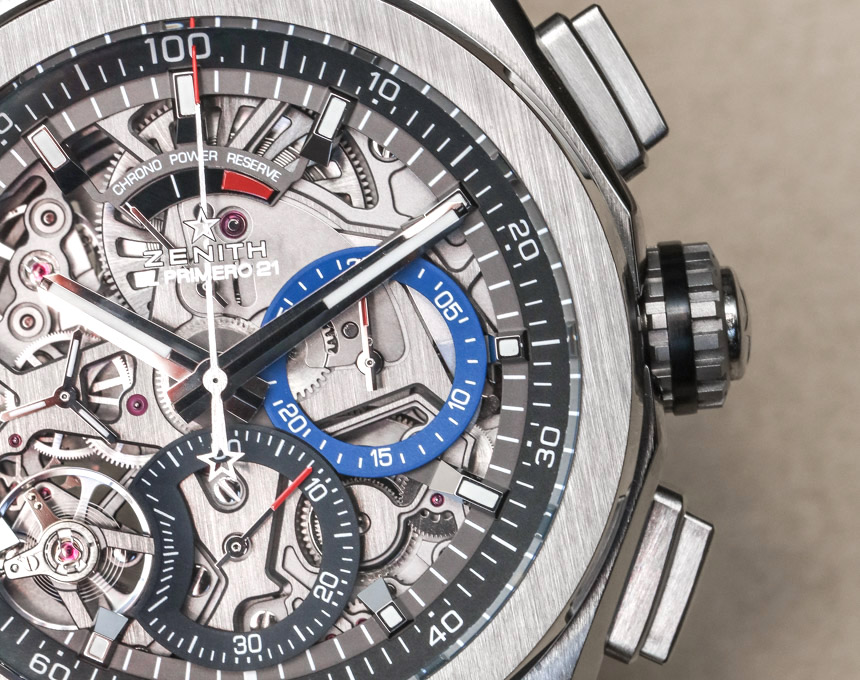
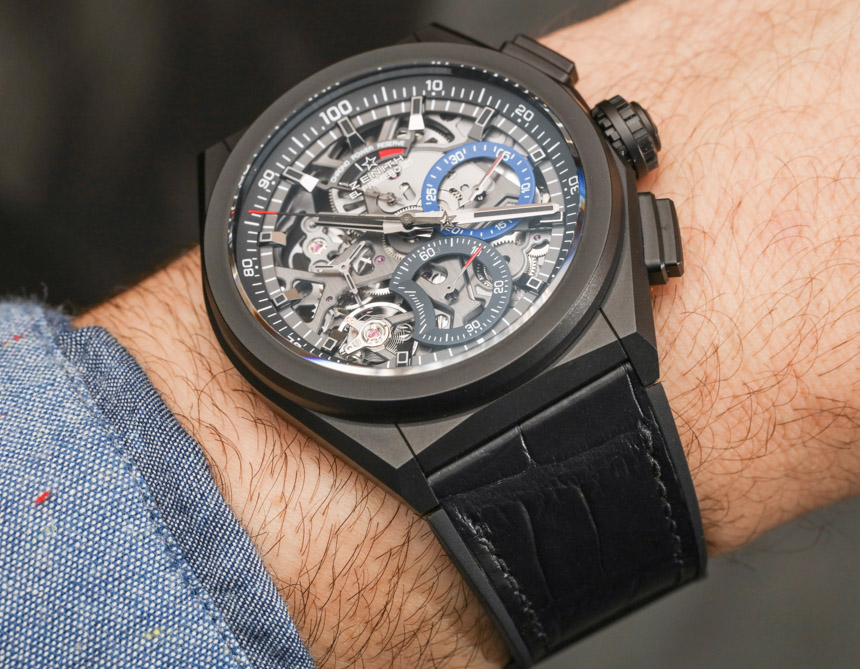
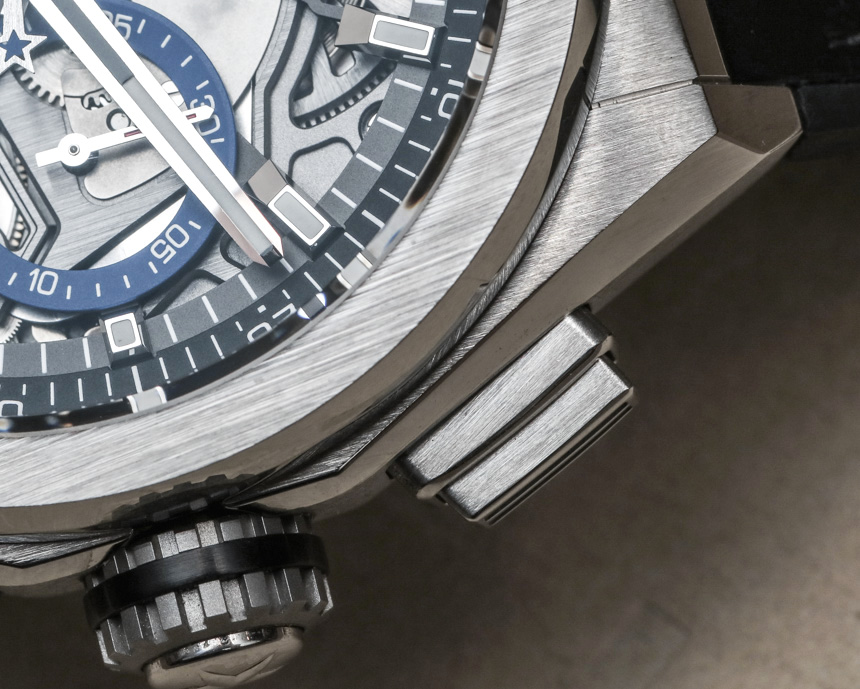
The El Primero 21 is Zenith’s best current answer to “what is the 21st century version of the iconic El Primero.” The brand has been riding on the coattails of the 5Hz-operating-speed El Primero automatic chronograph for a long, long time. Just about everyone agrees they need something fresh to satiate those who already have one or more El Primero movement-based watches in their life. The El Primero 21 might be the answer to that, and moreover, it represents a new modern look and feel for the Zenith brand that has been (for the most part) decidedly classic in its aesthetic appeal.
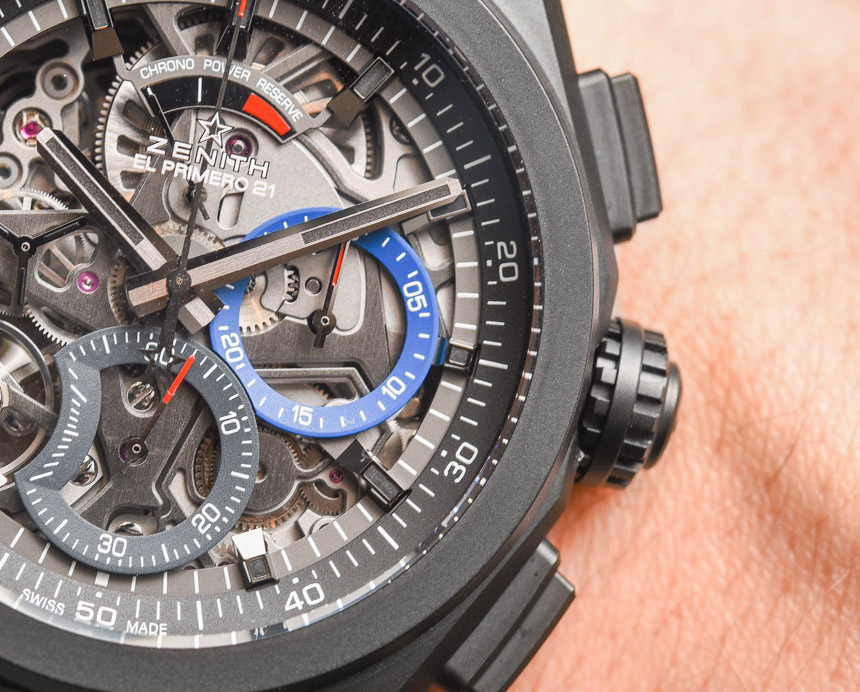
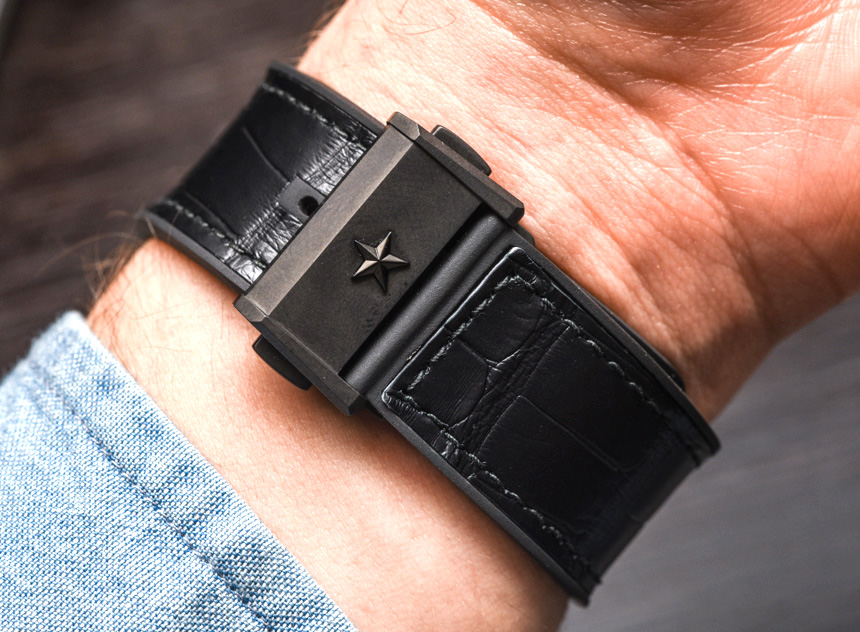
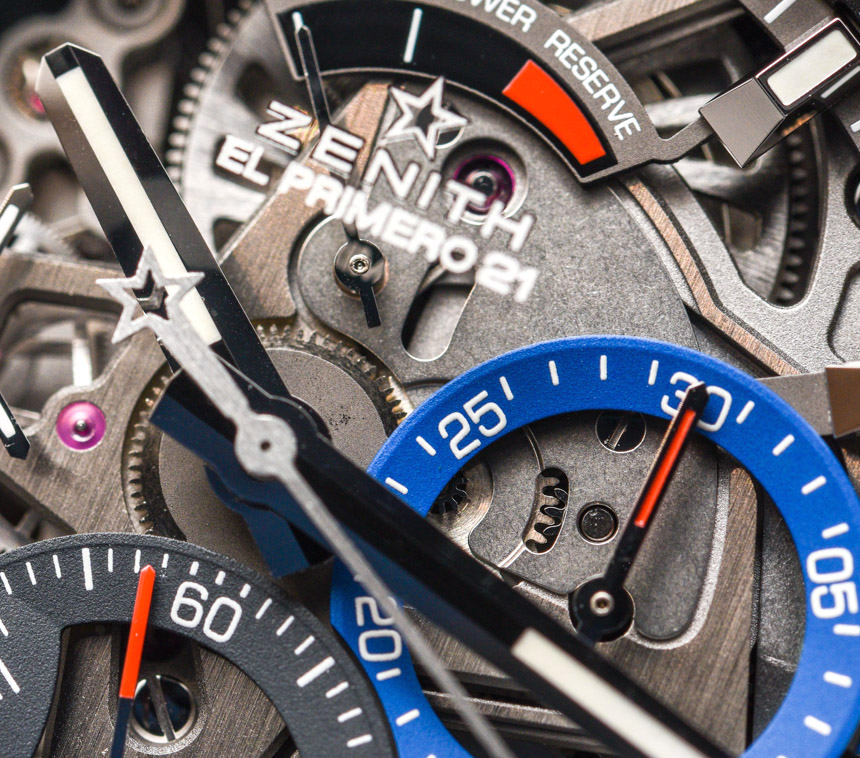
Of course, you cannot discuss the Zenith Defy El Primero 21 without mentioning Jean-Claude Biver. As the head of the LVMH watchmaking group he was the interim CEO of Zenith up until April of 2017 when Julien Tornare was named CEO of Zenith
. However, the Zenith Defy El Primero 21 watch was a major product debut under Biver’s leadership, and many see it as a sign of things to come. It is, of course, a page out of his Hublot and TAG Heuer playbook, but tailored to the specific personality of Zenith.
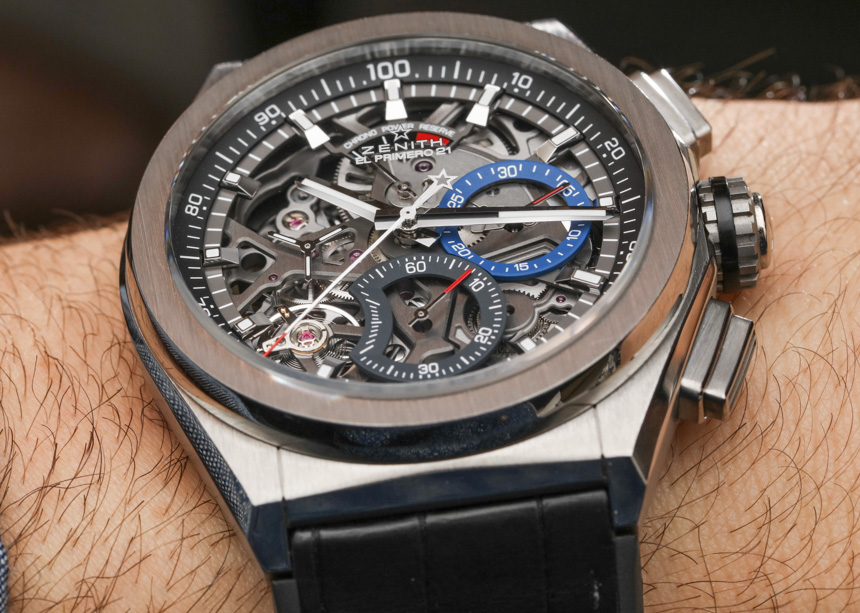
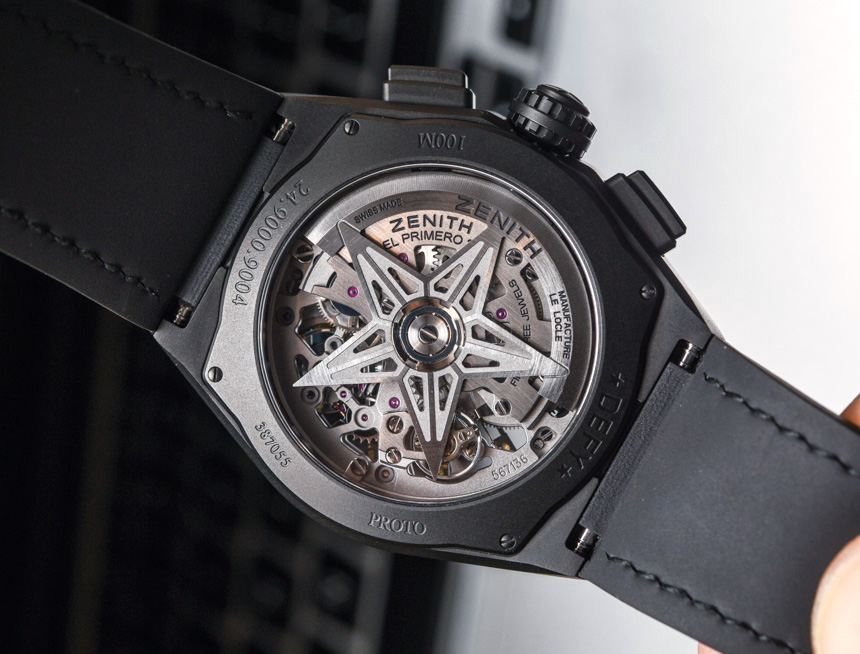
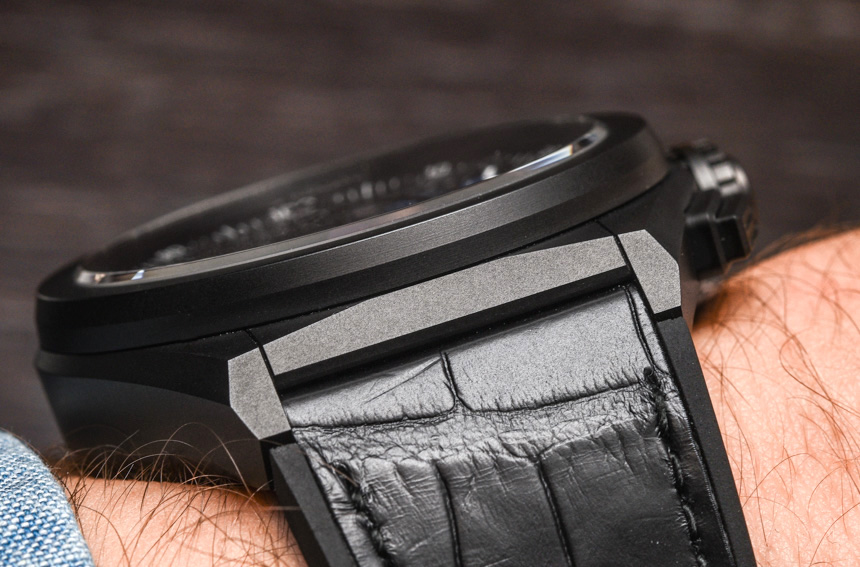
I have to admit that I was thinking that the Zenith Defy El Primero 21 watch would be a bit more controversial at Baselworld 2017. Modern-looking watches – especially those released under guidance from Jean-Claude Biver tend to be. While a few people exclaimed that the case and concept reminded them of Hublot, or that the “Defy” product name reminded them of the infamous Nataf era at Zenith, there seemed to be a lot of consensus that the Zenith Defy El Primero 21 was a pretty darn cool watch – and I have to agree.
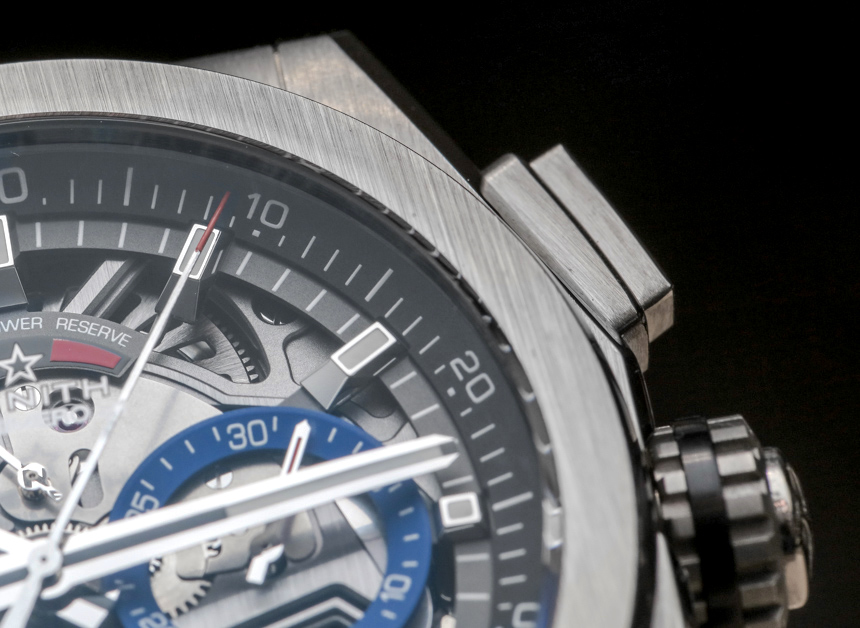
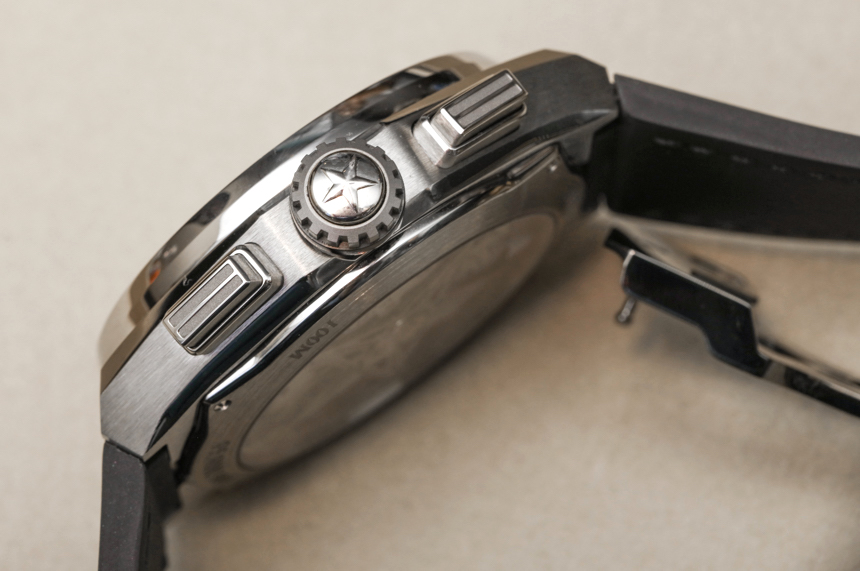
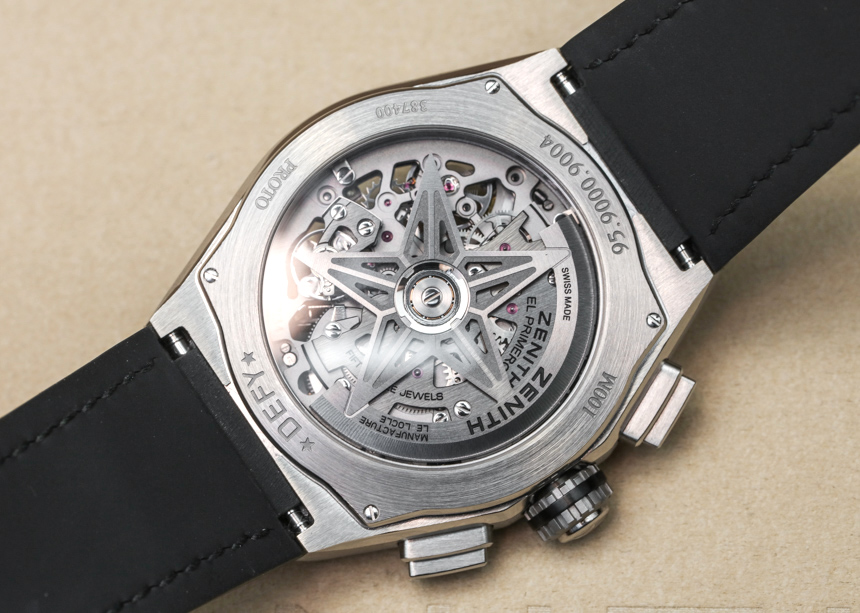
At its heart, the mechanical novelty of the watch and the caliber El Primero 9004 automatic movement is in offering a 50Hz (360,000bph) chronograph escapement in a movement that has a 5Hz (36,000bph) escapement for the time-telling mechanism, with 50 hours of power reserve. This is thus a “5 + 50Hz movement,” and that makes it uncommon. Yes, the no-longer-produced TAG Heuer Carrera Mikrograph did that, but in a package that was a lot more expensive, and not nearly as neat-looking. The 50Hz regulation organ of the chronograph would be way too much of a power hog to serve as the regulation system for the time. As it is, the chronograph has a maximum power reserve of 50 minutes, with a dedicated power reserve indicator under 12 o’clock.
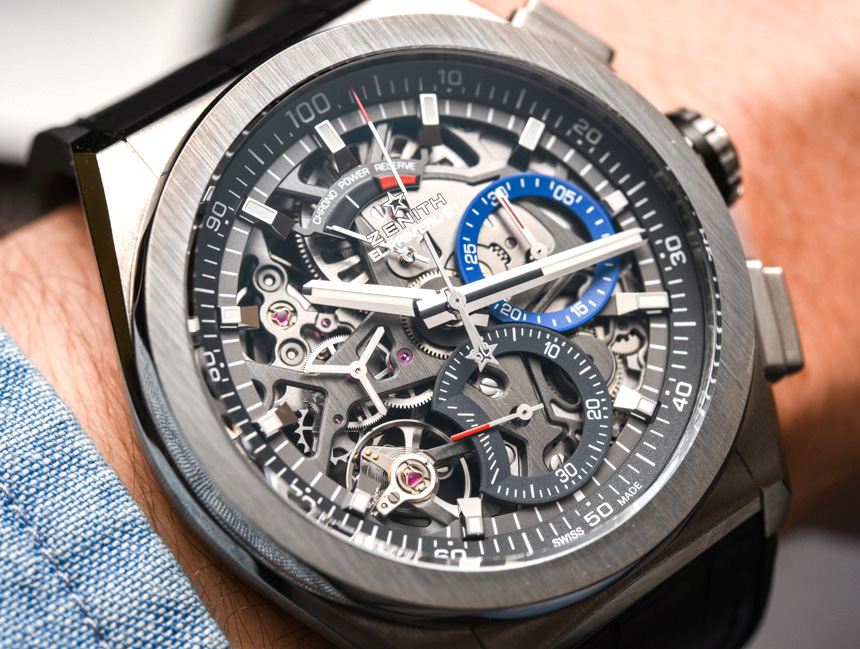
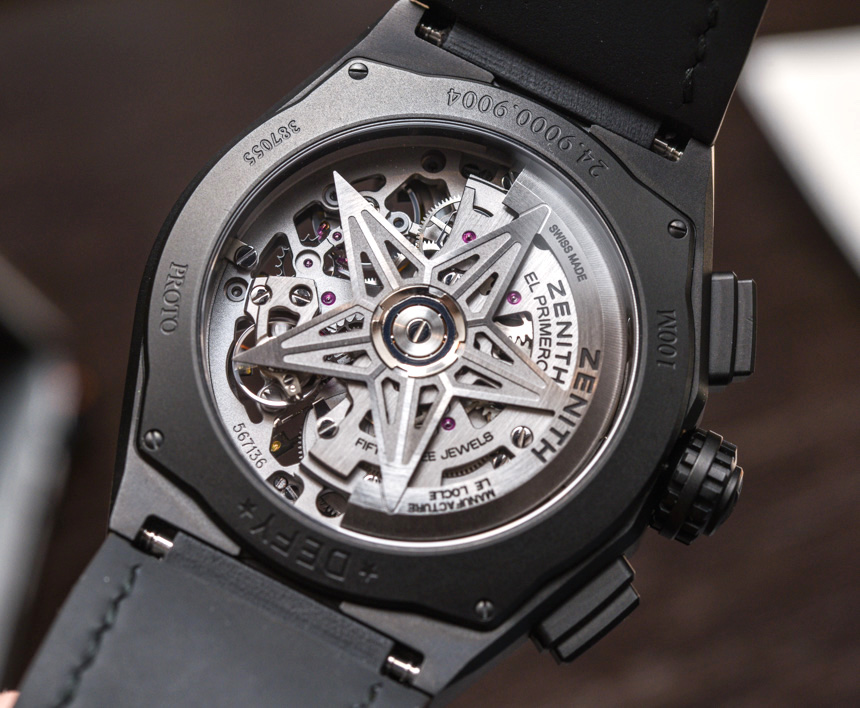
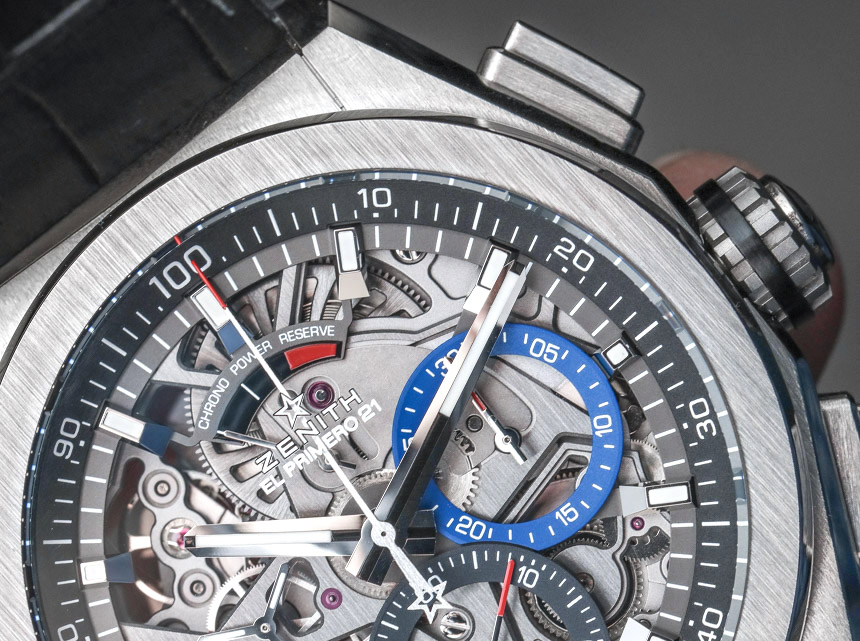
The solution to have two regulation systems for the time and for the chronograph makes sense. Using the 1/100th-of-a-second chronograph is fun, because the main chronograph seconds hand makes one revolution around the dial each second. In this way, it is similar to the Zenith Striking 10th, but just much more precise in its motion. I do, of course, wonder how the movement fares when it comes to wear and tear because the forces required for all of this are way above and beyond what most traditional mechanical movements need to bear.
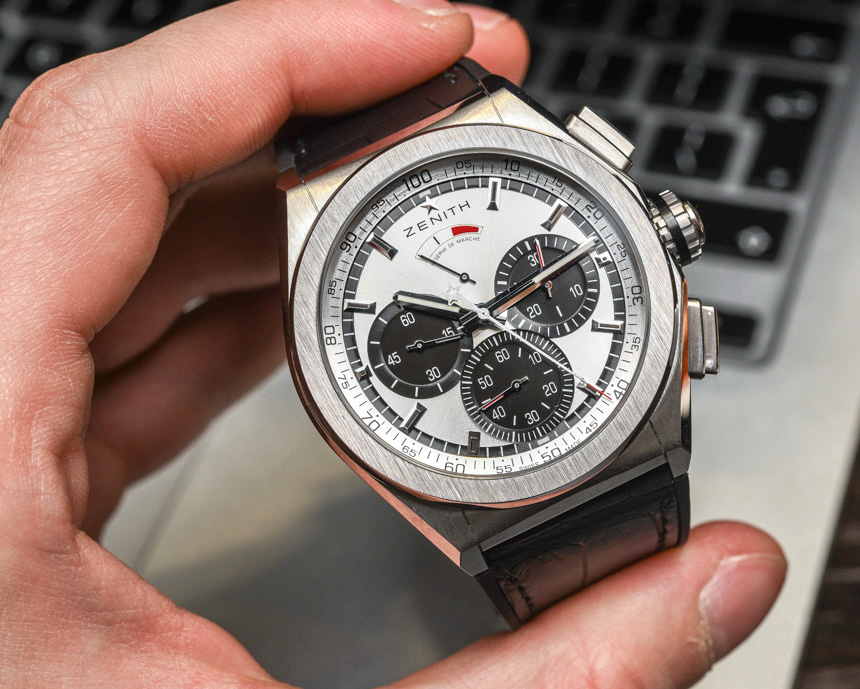
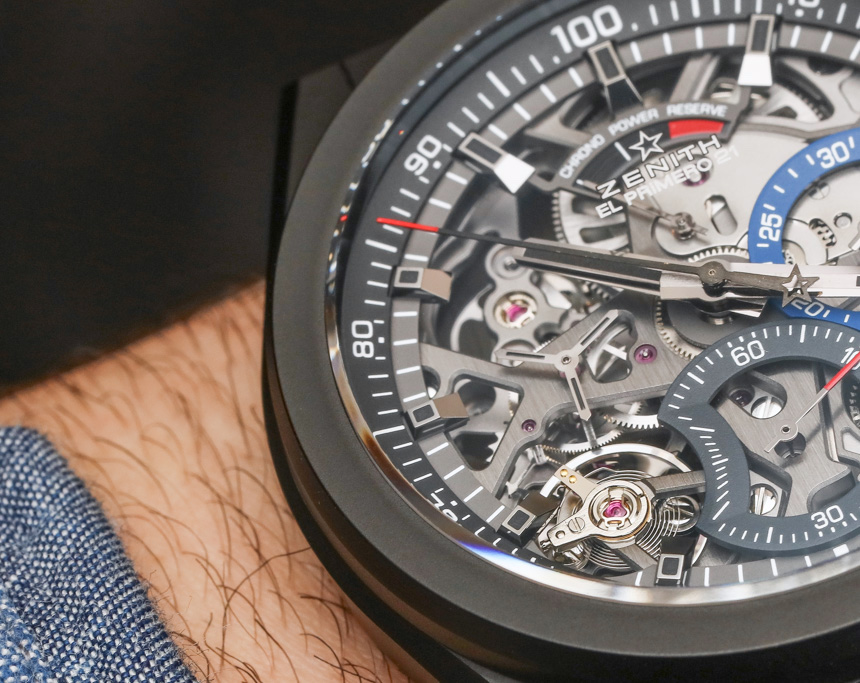
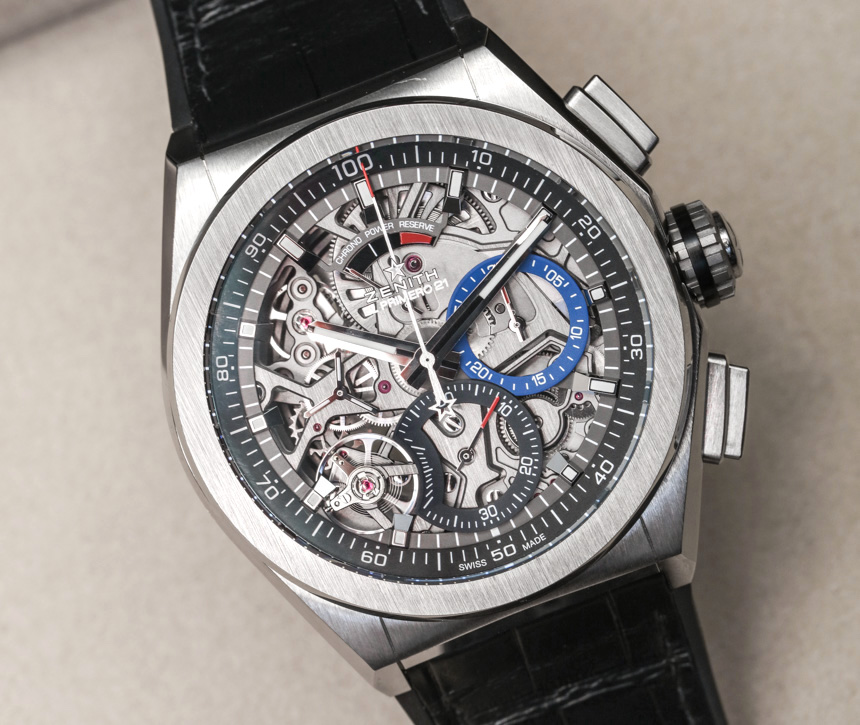
When I debuted the Zenith Defy El Primero 21, I explained that Zenith was going to release it as three versions to start. I didn’t think I’d like the solid-dial version as much as the open-dial versions… but I do. The 44mm-wide titanium or black ceramicised (not to be confused with circumsized!) aluminum case is comfortable and attractive. The case is also 14.5mm thick and water resistant to 100 meters with a flat AR-coated sapphire crystal). It might not have the immediate appeal of an Hublot Big Bang, but then again, it isn’t trying to be one. In fact, the case looks remarkably elegant on the wrist, with the most prominent features being the slightly disproportionately large rectangular chronograph pushers – which is likely a purposeful design decision given that this watch is all about the chronograph.
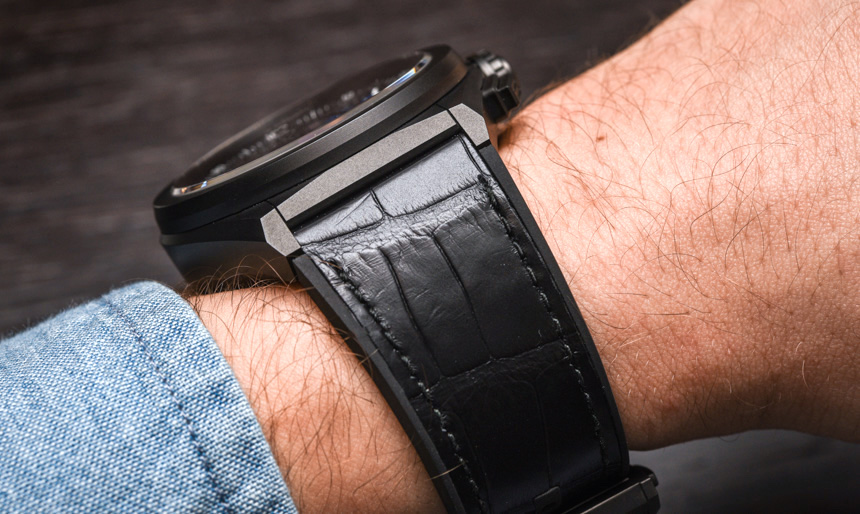
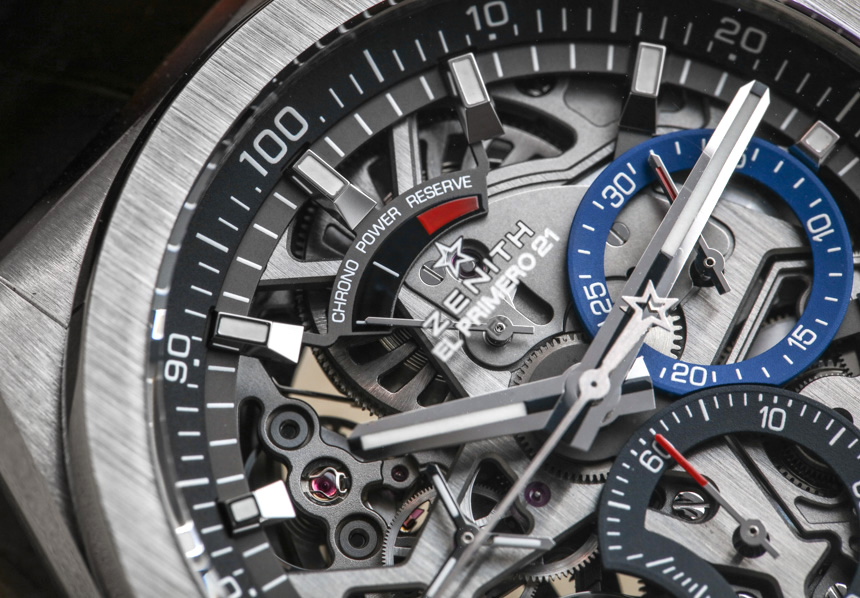
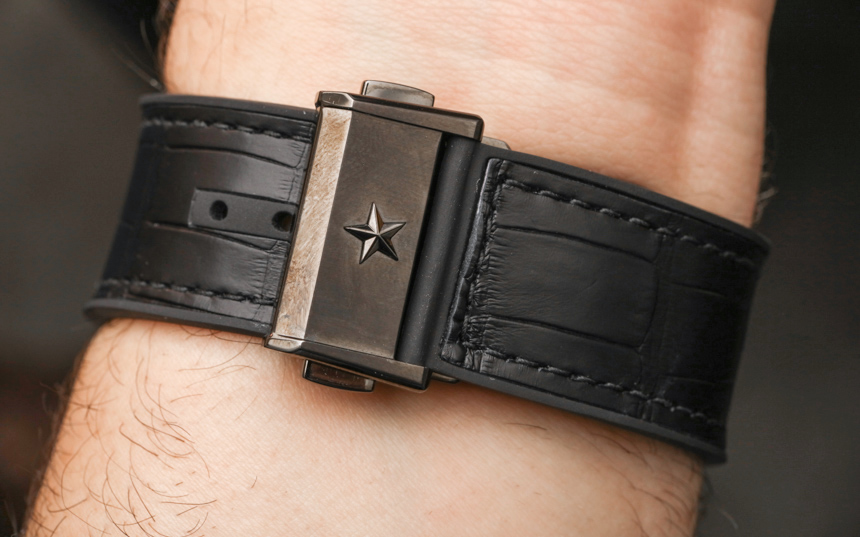
I will, however, say that the strap, which is rubber with an outer strip of black alligator, is right out of the Hublot playbook – and is something that you find in TAG Heuer as well. That’s really not a bad thing, but it is worth mentioning. Why these straps? Well, they offer the comfort of rubber with the exterior appeal of a fine natural skin. Moreover, they help the leather last a lot longer.
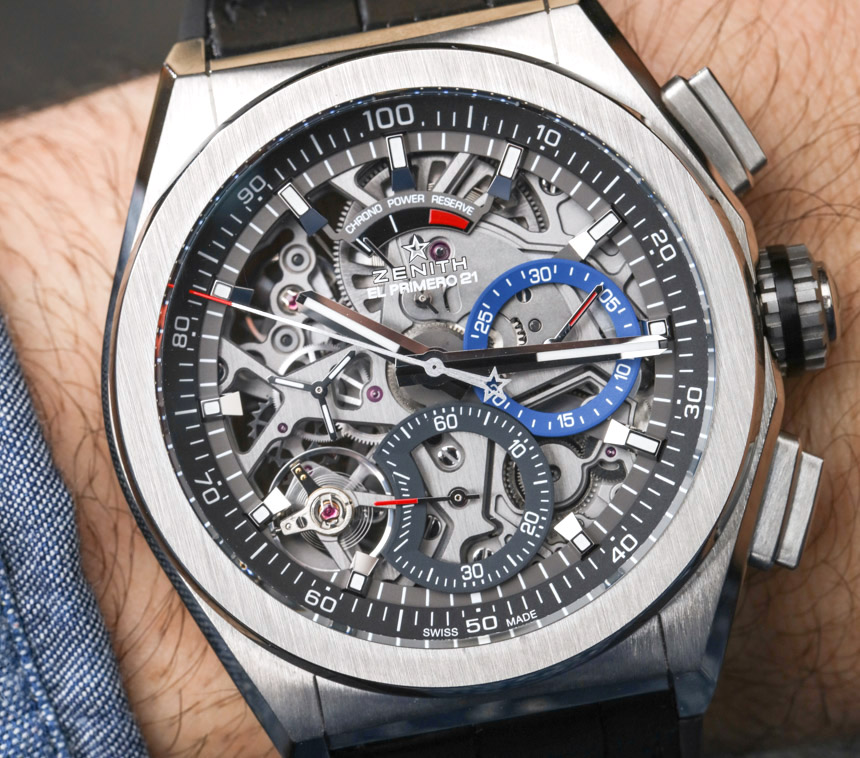

The dial of the Zenith Defy El Primero 21 (open or otherwise) is very much Zenith. You see Zenith-style hands and hour markers, and even the colorful subdials in some form or another. Legibility is pretty good, and the view into the movement is really nice. You can even get a nice look at the distinctive movement architecture that helps make the caliber El Primero 21 special. In real life, the large “star-style” automatic rotor does look pretty cool as well.
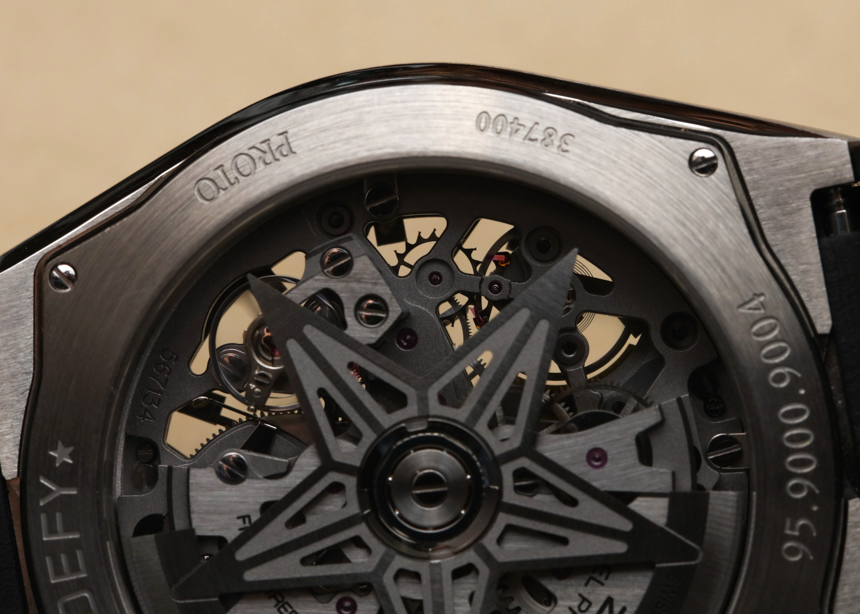
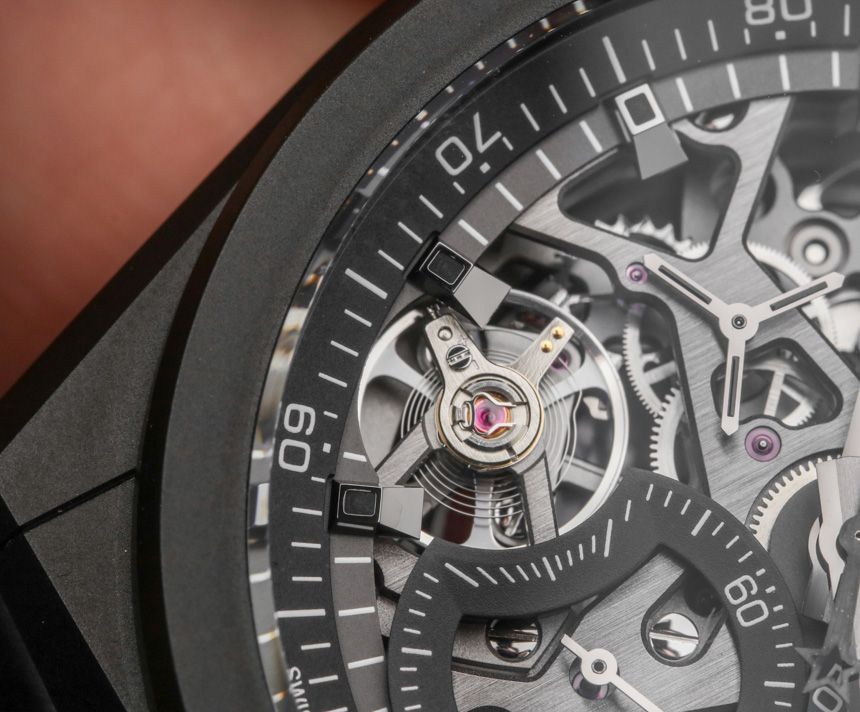
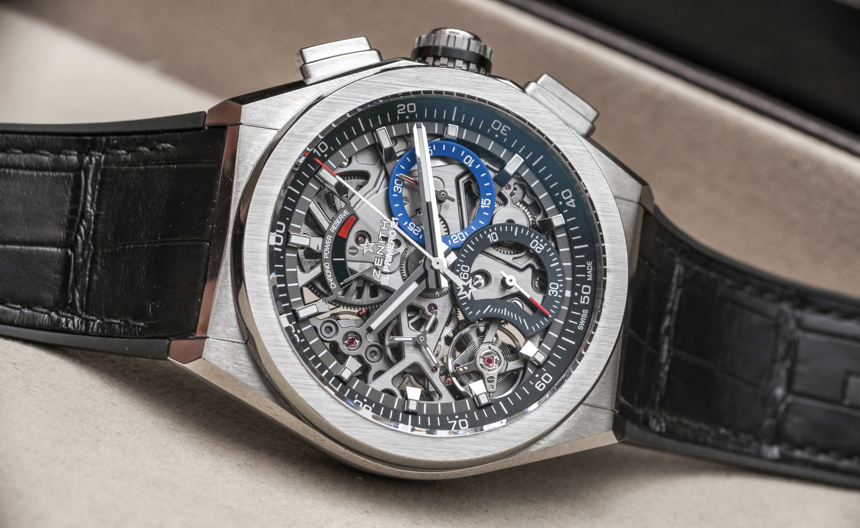
With the Zenith Defy El Primero 21, Zenith adds some important novelty to a brand that has been a bit stale lately when it comes to new ideas. Zenith is a brand that a lot of people like, without necessarily having a specific model they want. I do now want the Defy El Primero 21 because it combines a lot of things I value, as well as a great mechanical story. It is also the type of high-end mechanical watch that requires little explanation for non-watch enthusiasts to appreciate. Merely hand them the watch and allow them to admire the skeletonized dial before activating the 50Hz-operating-speed chronograph and let them listen to the audible hum of the escapement while smiling at all the hands going around. Zenith is no doubt going to make the Zenith Defy El Primero 21 an important and major part of its product strategy for the next few years, and with an opening price of about $10,000 – it is the right price and a fair amount of watch for the money.
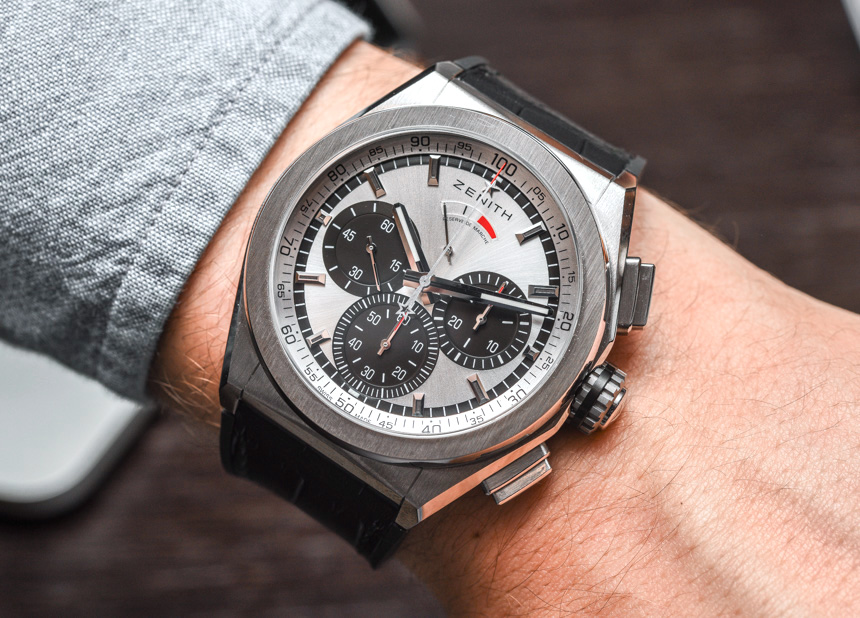
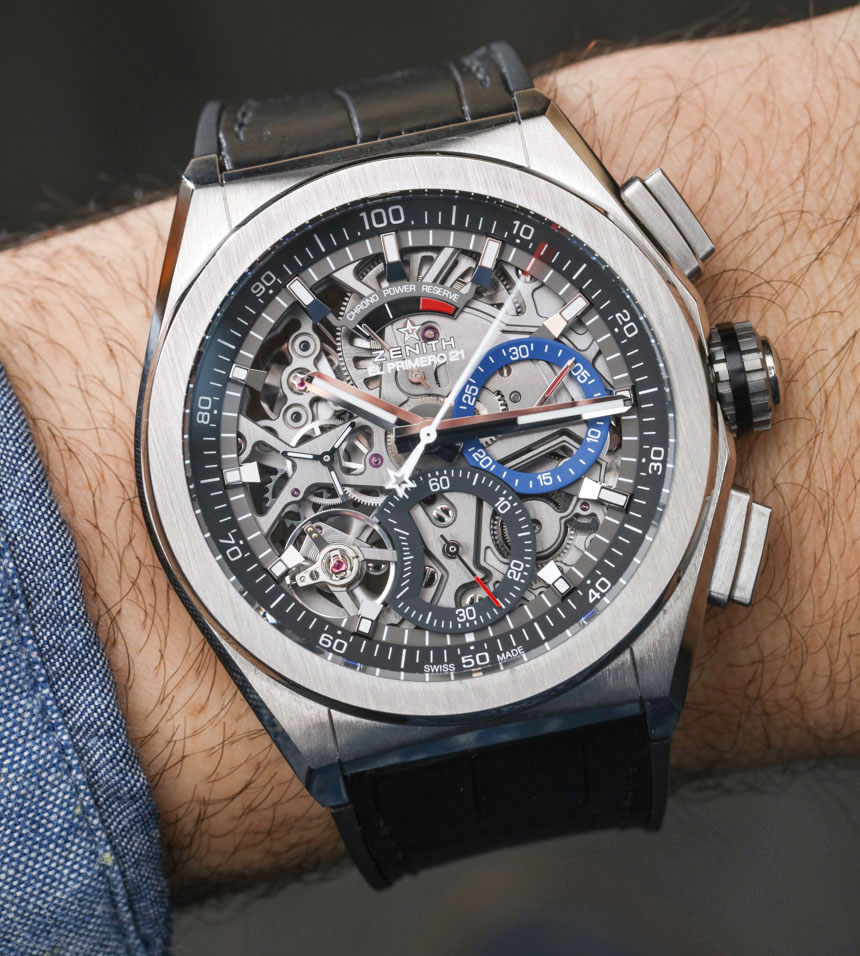
Price for the reference 95.9001.9004/01.R582 (non-skeletonized dial) is $10,600 USD
, the reference 95.9000.9004/78.R582 (natural titanium) is $11,600
, and the reference 24.9000.9004/78.R582 (black titanium) is $12,600. zenith-watches.com

